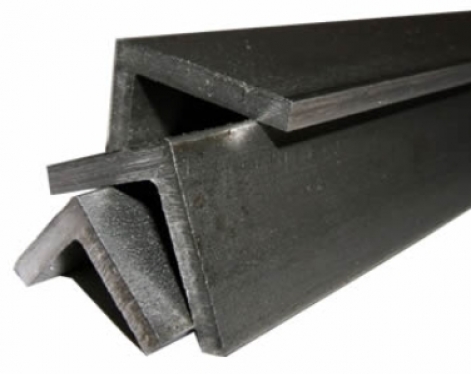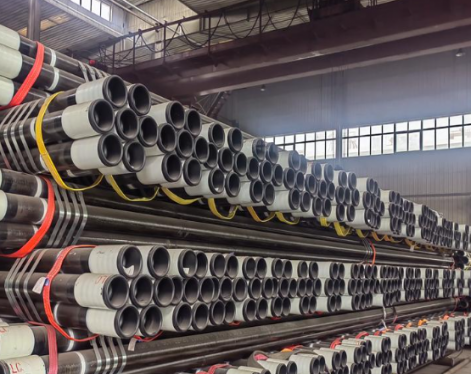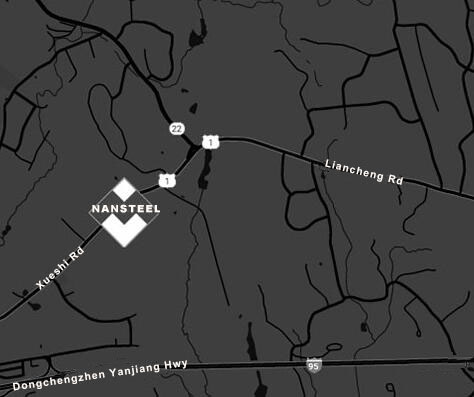Although both hot rolled and cold rolled angle steel belong to the same angle steel family, their processing techniques differ significantly, resulting in distinct advantages in performance, price, and application. Understanding these differences is key to choosing the right material for your application.
Processing technology comparison
The processing techniques for hot-rolled and cold-rolled angle steel can be described as two worlds apart. During hot rolling, the steel billet is heated to 1100°C-1250°C. It then passes through a rolling mill in the austenitic region through multiple passes, gradually forming the desired cross-sectional shape and dimensions. Finally, it is cooled naturally or forcedly.
Cold-rolled angle steel uses hot-rolled angle steel as raw material. It is first pickled to remove the surface oxide scale, and then rolled through a rolling mill at room temperature. The process may also undergo annealing, flattening and other processes to optimize the performance and surface quality of the angle steel.
Appearance and surface comparison
There are also obvious differences in appearance and surface between hot rolled angle steel and cold rolled angle steel. During the high-temperature rolling process of hot rolled angle steel, a thick layer of iron oxide scale will be generated on the surface, giving it a rough and gray appearance. This layer of iron oxide scale not only affects the surface finish of the angle steel, but also may cause some tiny unevenness and rolling marks on its surface.
Since cold rolled angle steel is rolled at room temperature and undergoes pickling and other treatments to remove iron oxide before processing, its surface is very smooth and flat, with almost no obvious defects, showing the original luster of the metal and having better surface quality.

Physical properties comparison
Hot rolled and cold rolled angle steels have different physical properties. Hot rolled angle steel, due to its high-temperature rolling process, has a coarse grain structure. While it possesses a certain degree of mechanical strength and plasticity, meeting conventional engineering requirements (such as supporting building structures to withstand pressure), it suffers from poor toughness. It is prone to stretching and bending when subjected to significant impact or complex stresses, making it difficult to use in applications requiring high toughness.
Cold rolled angle steel features a fine-grained structure, resulting in superior mechanical strength and toughness, allowing it to withstand greater loads. When used in mechanical components subject to frequent vibration or dynamic loads, its exceptional toughness effectively reduces the risk of fatigue damage, enhancing product reliability and service life.
Cost-effectiveness comparison
Hot rolled angle steel differs significantly from cold rolled angle steel in terms of price. Hot-rolled angle steel's simple production process, requiring no complex equipment or precise control, results in lower costs and a more affordable price. In large-scale infrastructure projects like bridges and large factories, where demand is high, the use of hot rolled angle steel effectively controls costs and reduces project costs.
Cold rolled angle steel is a complex process, requiring multiple steps such as pickling, cold rolling, and annealing. This requires high standards for both equipment and craftsmanship, resulting in increased costs and a relatively high price. However, it remains a preferred choice in industries such as electronic equipment manufacturing and precision instrument production, where precision and surface quality are paramount, due to its ability to meet stringent requirements.
Application areas comparison
Hot rolled angle steel is widely used in large structures with relatively low precision requirements but strict cost control due to its price advantage and good mechanical strength.
1. Construction Industry: Used in large structures such as high-rise buildings and bridge supports, including large building frames, bridge structures, and industrial plants.
2. Machinery Manufacturing: Used in manufacturing brackets, bases, and other components for large machinery, providing stable support.
3. Application Characteristics: Leveraging its competitive price and sufficient mechanical strength, it is suitable for applications requiring low precision and strict cost control.
Cold rolled angle steel is more widely used in fields with high requirements on precision and surface quality due to its high precision and good surface quality.
1. Electronic Equipment Manufacturing: Used to produce electronic equipment housing frames, meeting stringent requirements for dimensional accuracy and aesthetic quality.
2. Precision Machinery Manufacturing: Used to produce various precision components, ensuring high-precision machinery operation.
3. Architectural Decoration: Processed into exquisite decorative components such as stair railings, door and window frames, and more, enhancing the aesthetics and quality of buildings.
Read more: The Difference between Angle Steel and Channel Steel
Processing technology comparison
The processing techniques for hot-rolled and cold-rolled angle steel can be described as two worlds apart. During hot rolling, the steel billet is heated to 1100°C-1250°C. It then passes through a rolling mill in the austenitic region through multiple passes, gradually forming the desired cross-sectional shape and dimensions. Finally, it is cooled naturally or forcedly.
Cold-rolled angle steel uses hot-rolled angle steel as raw material. It is first pickled to remove the surface oxide scale, and then rolled through a rolling mill at room temperature. The process may also undergo annealing, flattening and other processes to optimize the performance and surface quality of the angle steel.
Appearance and surface comparison
There are also obvious differences in appearance and surface between hot rolled angle steel and cold rolled angle steel. During the high-temperature rolling process of hot rolled angle steel, a thick layer of iron oxide scale will be generated on the surface, giving it a rough and gray appearance. This layer of iron oxide scale not only affects the surface finish of the angle steel, but also may cause some tiny unevenness and rolling marks on its surface.
Since cold rolled angle steel is rolled at room temperature and undergoes pickling and other treatments to remove iron oxide before processing, its surface is very smooth and flat, with almost no obvious defects, showing the original luster of the metal and having better surface quality.

Physical properties comparison
Hot rolled and cold rolled angle steels have different physical properties. Hot rolled angle steel, due to its high-temperature rolling process, has a coarse grain structure. While it possesses a certain degree of mechanical strength and plasticity, meeting conventional engineering requirements (such as supporting building structures to withstand pressure), it suffers from poor toughness. It is prone to stretching and bending when subjected to significant impact or complex stresses, making it difficult to use in applications requiring high toughness.
Cold rolled angle steel features a fine-grained structure, resulting in superior mechanical strength and toughness, allowing it to withstand greater loads. When used in mechanical components subject to frequent vibration or dynamic loads, its exceptional toughness effectively reduces the risk of fatigue damage, enhancing product reliability and service life.
Cost-effectiveness comparison
Hot rolled angle steel differs significantly from cold rolled angle steel in terms of price. Hot-rolled angle steel's simple production process, requiring no complex equipment or precise control, results in lower costs and a more affordable price. In large-scale infrastructure projects like bridges and large factories, where demand is high, the use of hot rolled angle steel effectively controls costs and reduces project costs.
Cold rolled angle steel is a complex process, requiring multiple steps such as pickling, cold rolling, and annealing. This requires high standards for both equipment and craftsmanship, resulting in increased costs and a relatively high price. However, it remains a preferred choice in industries such as electronic equipment manufacturing and precision instrument production, where precision and surface quality are paramount, due to its ability to meet stringent requirements.
Application areas comparison
Hot rolled angle steel is widely used in large structures with relatively low precision requirements but strict cost control due to its price advantage and good mechanical strength.
1. Construction Industry: Used in large structures such as high-rise buildings and bridge supports, including large building frames, bridge structures, and industrial plants.
2. Machinery Manufacturing: Used in manufacturing brackets, bases, and other components for large machinery, providing stable support.
3. Application Characteristics: Leveraging its competitive price and sufficient mechanical strength, it is suitable for applications requiring low precision and strict cost control.
Cold rolled angle steel is more widely used in fields with high requirements on precision and surface quality due to its high precision and good surface quality.
1. Electronic Equipment Manufacturing: Used to produce electronic equipment housing frames, meeting stringent requirements for dimensional accuracy and aesthetic quality.
2. Precision Machinery Manufacturing: Used to produce various precision components, ensuring high-precision machinery operation.
3. Architectural Decoration: Processed into exquisite decorative components such as stair railings, door and window frames, and more, enhancing the aesthetics and quality of buildings.
Read more: The Difference between Angle Steel and Channel Steel









